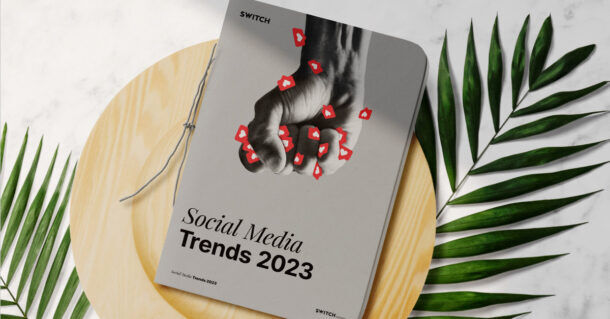Get your PDF copy of Social Media 2023
Fair warning, this is a relatively long read. If you don’t have the time to take it all in now, you can download the PDF version of our 2023 Social Media Trends for free by clicking below. Otherwise, just keep reading!
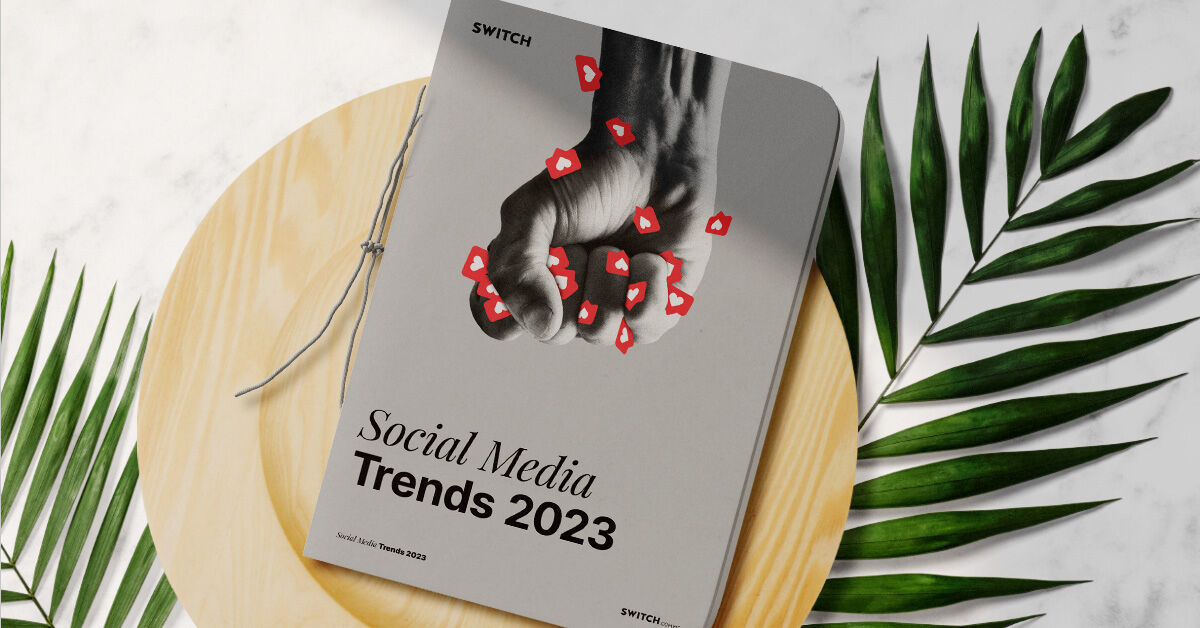
Intro to Social Media Trends 2023
- 59% of the world is on social media as of April 2022.
- The modern consumer is on a minimum of 3 platforms.
- Leveraging social media for the best use means using it for more than just sales.
- Using social media for entertainment or education builds trust with your consumers.
As of April 2022, 59% of the world is on social media. That doesn’t take into account the remainder of the year, which can see several new users added to socials by the time the new year rings in. According to Data Reportal, social media has already seen an additional 200 million users hop onto the platforms in July 2022.
The rest of the year will be no different. And the changes that businesses have seen as a result of social media are going to grow ever more complex as we head into a new era of online.

A Global Snapshot
The modern consumer is on a minimum of three platforms. The modern consumer is invested in communicating with brands the same way they communicate with friends. The modern consumer is used to rapid-fire responses, an algorithm they need to game to achieve certain results, and their data online for everyone to see.
Social media has retrained not just businesses, but also their consumers into making a space for social media in its midst. That’s a fact.
Here’s another fact for you: social media is in as much of a state of flux as every other industry.
For the last three years, the internet penetration rate has grown partially as a result of the pandemic, partially as a result of the increasingly technological ways of our lives, and partially just because it’s now become very difficult to work, study, or live without the internet as a necessity. 2023 will not see a slowdown – but some facets of the internet and social media which have been taken as part and parcel of online life are struggling.
Others are rising to the occasion.
What’s here to stay:
There are a few things that 2022 ushered in that aren’t going anywhere, anytime soon – they’re too useful to the lives we have built, too part of the way we work online, and too much like a good thing.
Here’s what’s staying for 2023.

1. E-commerce Boom
The only thing surprising about the social media e-commerce industry is that it took so long to come to the West. In China, where it already made up 14.3% of total online retail sales by 2021, social commerce is old enough to be second nature, which the West is rapidly discovering. Brands that expand into social media storefronts are in the next step of their evolution as household names; brands that haven’t yet but are planning it into their strategy for next year will soon find that social media storefronts afford convenience both for them and for their consumers, and brands who have yet not decided whether they want a social media storefront might yet consider trying it out. Regardless of what side you fall on, social commerce is not going anywhere.

2. I’m Listening
It follows that if a lot more people are spending time shopping on social media, they’re also looking to connect with customer service, and this is something that’s going to follow on into 2023. Regardless of what the product or service is, digital customer service is a fundamental investment for any business that knows a significant part of its consumers want immediate connection, and want it now. With social media available for most on several devices, it’s much easier to expect an answer within the hour than within 2-3 business days – and, more to the point, consumers will not wait that long for any response.
In 2023, digital customer service is going to gain new importance as more consumers opt to connect with brands in less formalised ways – and ways that require far less effort to engage in.

What changed in 2022?
There’s one distinct thing that has changed from 2021 to 2022.
And that’s the attitude towards social media.
It’s not an unwarranted change.
Social media has had a hell of a year. Between algorithm critiques and takeovers and shifting consumer priorities, no social media platform has come out of 2022 without a negative news story attached to it – and for some of them, the negatives have far outweighed the positives.
Facebook’s user loss. TikTok’s harmful algorithm. The Twitter takeover. Instagram changing to become so much like Tiktok that it has strayed from its original intent: still photography and snapshots of human life.
In the greater scheme of things, these changes were always going to happen. We’re in the era of the internet of social media, and the only way for socials to stay on top is to take the best parts of what works on another platform and subsume it into themselves. We have Instagram that looks like Tiktok that looks like Facebook, with algorithms that push content that is quick to consume and will generate the kind of likes that only a black-and-white opinion can generate – something that is increasingly becoming the norm across all social media platforms. When you can make money generating the kind of content that people will either love or hate, it’s no wonder that social media has become a place where everything but the grey goes.
However, there is a likelihood that this is a short-lived phenomenon. The ongoing nostalgic push for an internet similar to the early days is showing itself in strange ways on social media.
Here are some of them, explained.
Trends 2023

Megatrend: You Are Your Community
Before we get into the trends for 2023, there’s something we need to say.
Any content that follows from here assumes that your goal for using social media is no longer just to convert as many people as possible into following or using your brand.
Here’s why.
We’ve been saying for a few years now that the internet – and social media, to a certain extent – has become increasingly pay-and-play. The more money you put into a post or a piece of content, the more it spreads, the more conversions that you ideally see in the end – and in the beginning of the internet of social media, it worked.
But it no longer works now. And we’d argue that it didn’t work then, either, if you value long-lasting relationships over quick conversions. Using ad spend to spread your message far and wide only gets you as far as awareness.
It won’t get a consumer to trust you. And it won’t get the consumer relationship that brands need today to do more than just survive.
Social media is a great tool.
For brands, it’s one of the best ways to build a loyal customer base that will keep you going – but you have to invest the time and the effort to use social media the way that it wasn’t intended: as something long-lasting, bigger than you are, and with the potential to change the way you think.
Social media is a great tool: for entertainment, for authentic connection, for limitless communication, but how you use it matters.
On the Edge
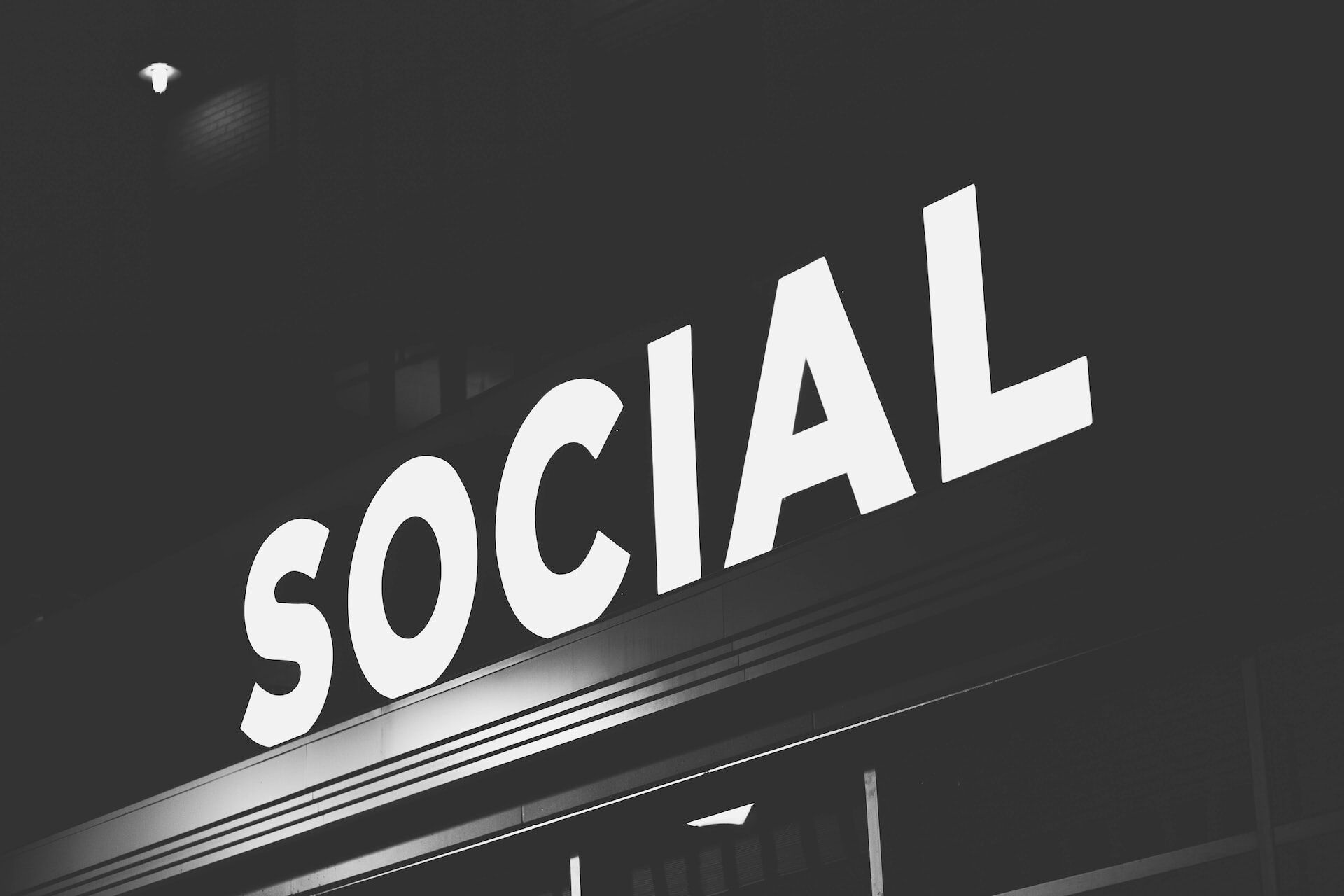
For every Facebook, Twitter, and Instagram, there’s a Digg, Reddit, and BeReal.
When we talk about alternative social media, we mean social media that doesn’t have the popularity of the larger counterparts we’re all used to. Whether it’s because businesses cannot monetise the platform as well or because it’s one of those socials that’s specifically built for a purpose that only a few like, these platforms exist on the edges of popularity, used by dedicated people, but rarely considered for brand campaigns or for advertising.
That might change in 2023.
Facebook, Instagram, and Twitter are all popular platforms for a reason: they were there early enough, and had the right combination of factors, to rise right to the top.
That was back in 2004, with MySpace. MySpace itself is an alternative social media platform now, though back in the early days of the internet, it was the social media platform.
The social media platforms that we have today have become as much a product of their time as MySpace. With the internet so inundated with ads, and social media becoming an e-commerce platform for most brands, consumers are looking for a place on the internet where they don’t have to constantly think about buying products that they might not necessarily need.
Alternative social media gives them that opportunity.
This doesn’t mean that the platforms we know are going anywhere. Some – like Facebook – have had problems for quite a while, but they’ve reached a point where they’re big enough that a few customer losses aren’t necessarily going to break down Facebook – but it would mean that there is less profit to be gained from that platform.
And with less profit come more opportunities to experiment.

Alternative social media is going nowhere. They might not be entirely ready to advertise on, but consumers are increasingly looking for places where that’s exactly what’s needed: a refuge for those who don’t want to buy.
Here’s another aspect of shifting to alternative social media: your targeting is going to be less accurate. Brands will struggle to connect to individuals, a little bit like the way they struggled to connect at the start. You can likely still get good results targeting communities, but the down-to-the-minute information of your current consumer of choice is rapidly becoming an unattainable reality – and not just because of alternative social media.
Data is a big concern for most consumers. With many of the bigger tech companies shifting to more ad-heavy or ad-beneficial platforms, we’re likely to see more consumers limiting what they share online – which means that, even if they are on your platform of choice, you might need to work harder to find out what you need to know about your consumers.
This doesn’t mean you won’t see results.
In fact, it’s the opposite. It’s the way to build a long-lasting relationship with a community, unlimited by age, demographic, or gender.
Statistics:
- Global consumers spend 2.5 hours on social media daily.
- Whatsapp and Instagram are the most popular social media platforms.
- Consumers will use an average of 7.5 social media platforms a month.
How do I use this trend?
This trend will take a little time to use well.
You need to start by first building your community on a social media platform that’s outside of the norm. It isn’t going to be easy, especially for brands: part of the reason that these social medias are popular is because there’s little to no advertising on them. Going in and making it your new brand voice is not going to curry favour.
However, hopping into a new social media and creating a presence there that isn’t to sell will help set your brand up as one that cares about its consumers – and that wants to talk to them regardless of limitations.
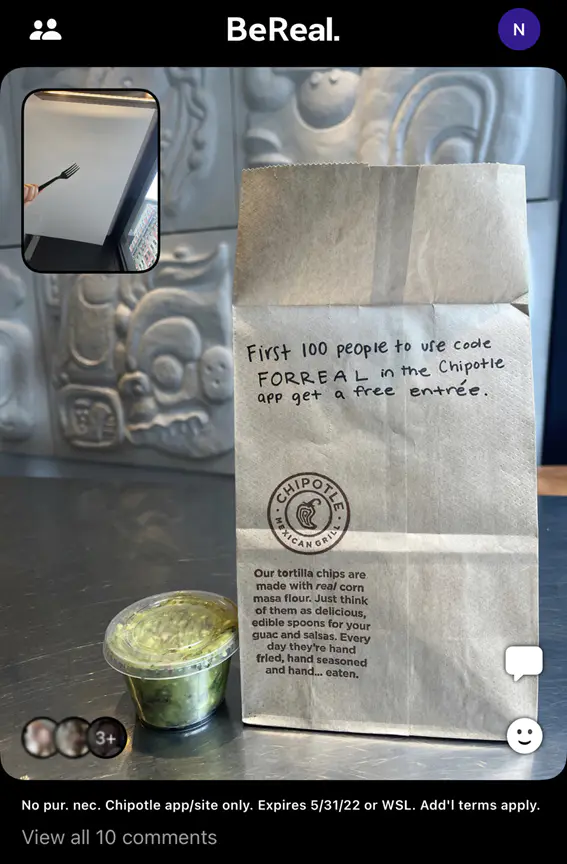
Who did it best?
BeReal is a brand free-for-all at the moment: the social media site challenges you to upload a front-and-back photo in less than two minutes, which is then distributed through the entire platform at random. That is the only post you’re allowed to post that day, limiting the spread of content.
On paper, it is not a platform for brands. However, Chipotle thought they could leverage it – and did.
Their first foray into BeReal was a picture of a reusable promo code where the first hundred people would get a free entree at their Chipotle of choice. Within 30 minutes, the codes were gone, and further days saw their codes getting snatched up almost instantly.
Longest, Long, Shorter, Short, Shortest
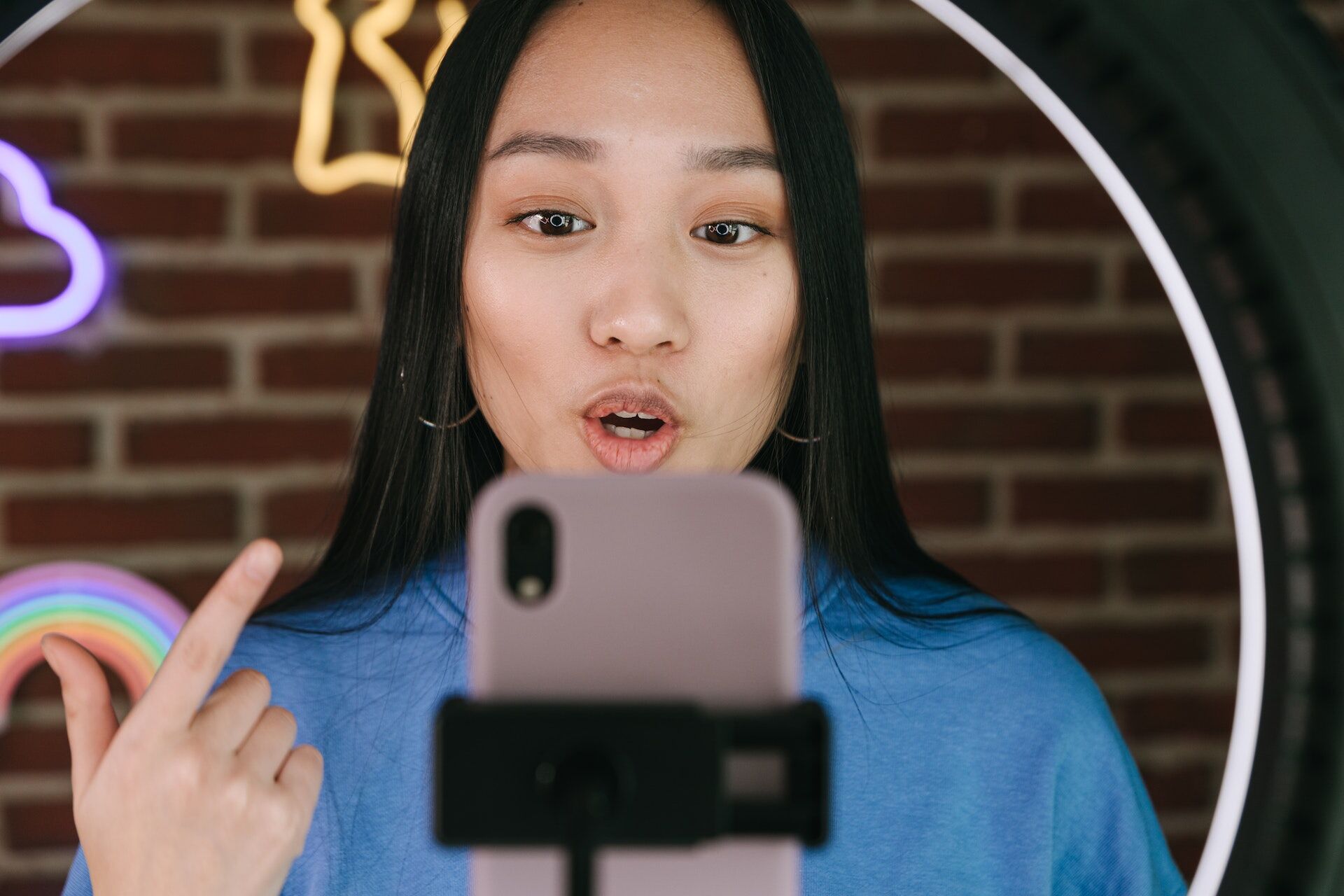
Trend 2: Video gets a boost
Short form
Short-form video has been around since the early days of Youtube, but it’s Tiktok’s skyrocketing popularity that makes this trend so prevalent for 2023.
During the pandemic, Tiktok’s short-form, no-focus-needed entertainment provided a source of low-effort engagement that kept people watching despite the ongoing issues on other social media platforms. After the pandemic, the habit of going onto Tiktok to find a revolving stream of new content stayed – and other social media platforms started to notice the decline of users who were now looking for a way to sate their scrolling appetite with more bite-sized content.
As a medium, short-form video has always been excellent for advertising, but the scale and size of Tiktok’s growth has pushed it into becoming a significant portion of the internet in 2022 – and in 2023.
However, it’s not the only kind of video that’s doing well on social media at the moment.
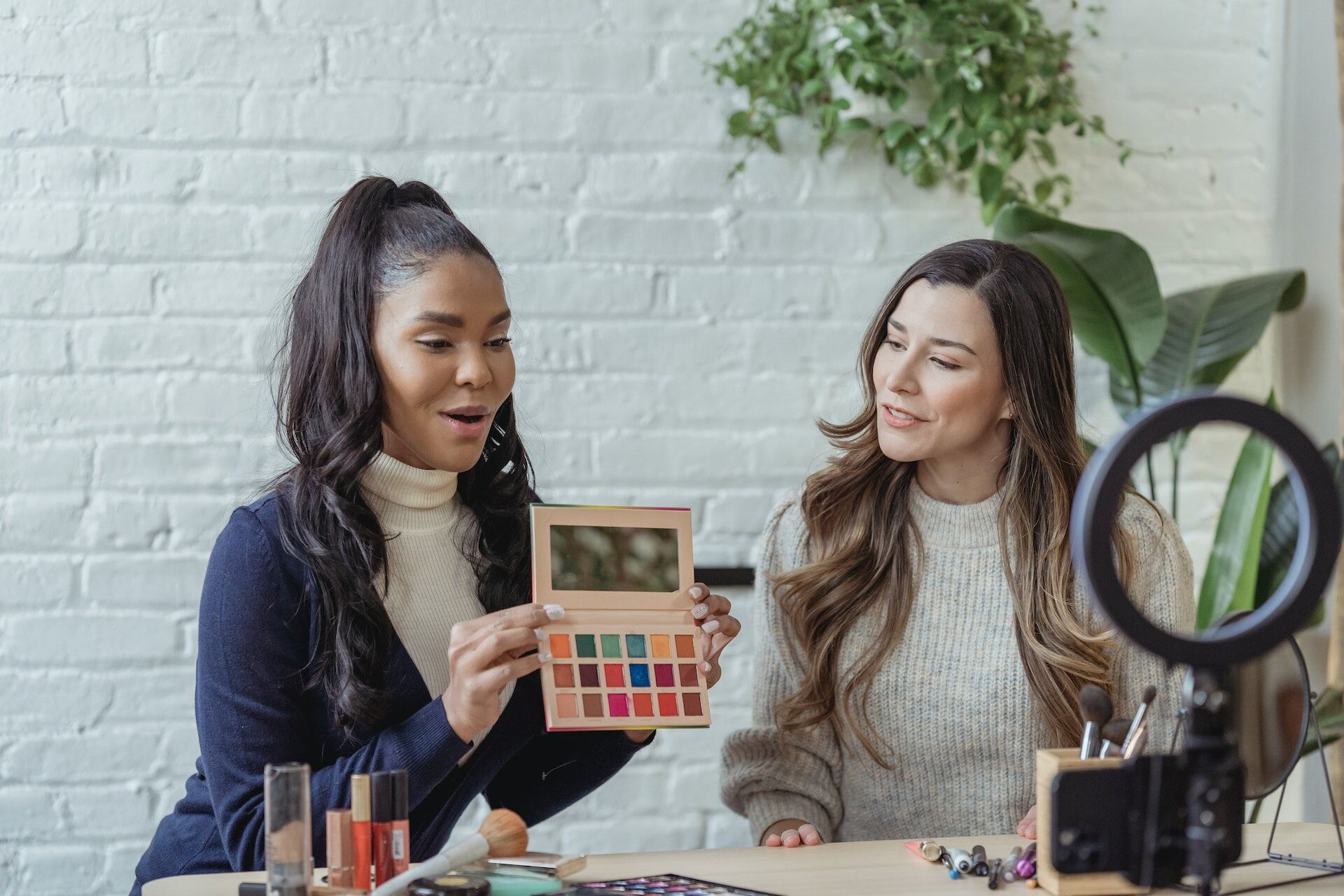
Long-form content
Think podcasts. Think pieces. Think video essays.
Think long.
Longform content exists in a strange place on social media: too long, and only dedicated fans will log on to watch; too short, and those same fans will go elsewhere.
And it exists alongside – and despite – short form video.
Longform video content can be half an hour. It can be an hour. It can be longer.
On Youtube, the long-form video essays that break down current dramas or fan culture theories are some of the most popular categories on the platform – more so now that short-form video has taken over other social media platforms. However, it doesn’t exist in a separate vacuum to short-form video; it exists in spite of it, and brands that can leverage both are going to do better than brands that opt for one or the other.
But you have to have good content. And it has to be content people care about.
Longform video is hard to do right for that reason. The things that consumers care about are infinite, but it’s only a select sort of consumer that will care enough to watch a long video on something that they’re dedicated to. Find the right formula, the right combination of things, and it can spark a new pipeline for the brand in creating content that people will watch regardless.
Statistics:
- People will watch an average of 19 hours of online video per week.
- 60% of Gen Z users will use Youtube to watch more content about a show or a movie they’ve just watched.
- 88% of consumers have been convinced to purchase a product after watching a brand’s video.
How do I use this trend?
Start with short-form video.
And start with entertainment first.
Put out ads-that-aren’t-ads. Introduce consumers to your brand’s world, to what it likes, to what it engages with and what it looks for. Make relating to your consumers the central point of video.
Nobody is going to watch an hour-long video on anything unless the content in it is worth consuming at length. This doesn’t mean that you need to throw out your entire content plan, or switch to making long-form videos only: it just means that, regardless of the length of the video, it has to be content that has more to it than just advertising a product.
Revisit your content plan. See where the gaps in your content are. See what you can offer consumers that just want to just relax, to watch something interesting, to occupy their brains for a little while. Not only will it give you a new content stream to work on, but every consumer wants a brand that engages with them for more reasons than just selling something.
Be that brand.

Who did it best?
SOYYO Candle is a DTC home goods brand that has to contend with a considerable amount of competition from both the home goods sector and the candles and scent good industry – however, it leverages Instagram to create a personable brand presence that appeals to consumers. Not only does it post regular curated content on its Instagram feed, SOYYO Candles has a whole stream dedicated to how best to use, and enjoy, their products.
For consumers that are fanatical about their home goods, a brand that comes out with content giving them further tips to increase the lifespan of their candles can only be a good thing – and for consumers who are new to the industry or just dipping their toes in, SOYYO candles positions itself as a helpful authority which only wants the best for them.
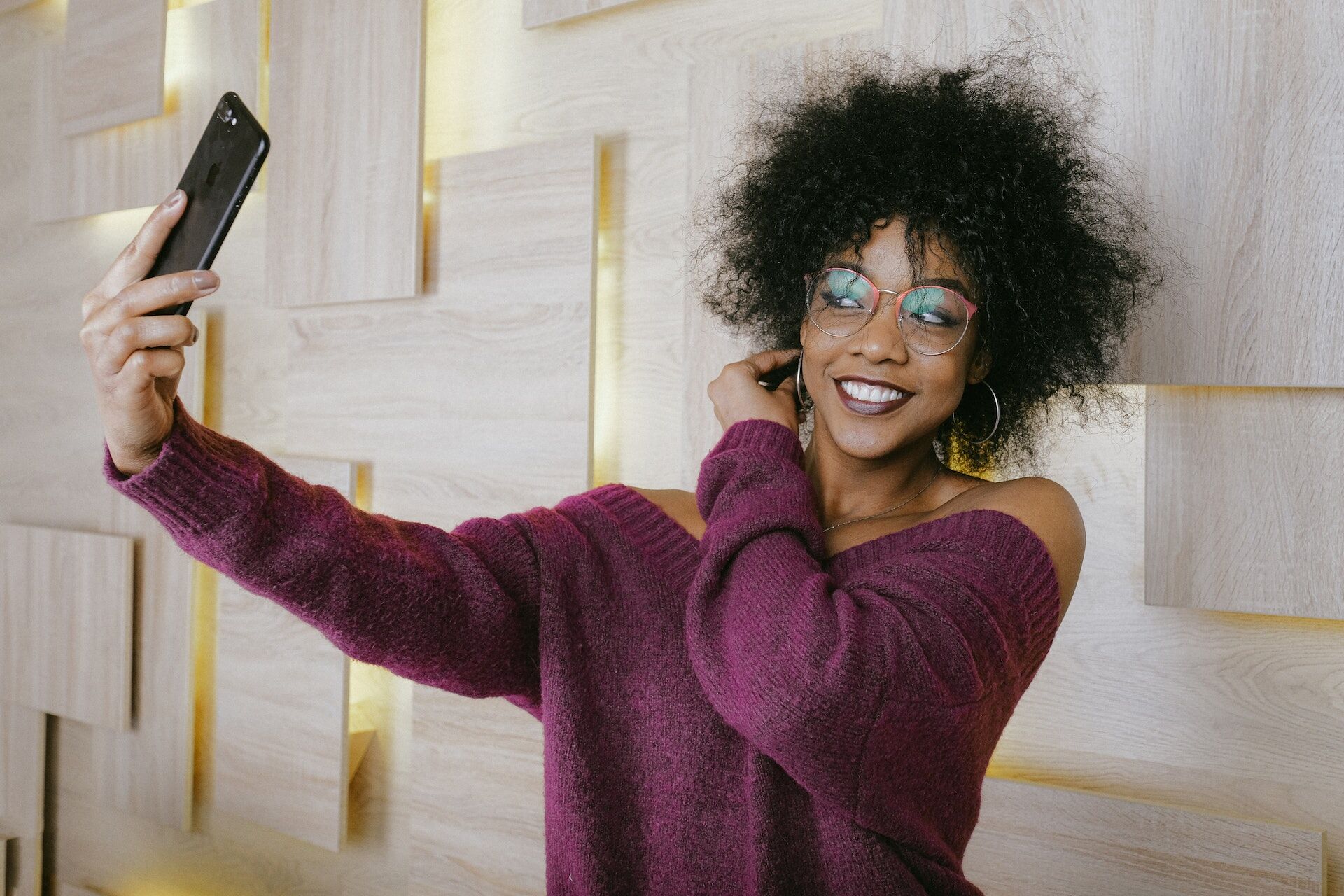
What Would You Do?
Trend 3: User-generated content creators grow in popularity
Our Head of Social is fond of saying, “everyone’s an influencer”.
And with the big-name influencers dropping in popularity, that’s never been more true.
User-generated content is not going anywhere: it’s just getting smaller, more intimate, and more personal, with anyone with access to a social media account having the opportunity to post snippets of their daily life and become a brand ambassador. The rise of movements such as cleaning, reading list curation, and perfume collecting has given a greater insight into the kind of slower hobbies that people watch – and seek out – online. Even though most might not be in the market to purchase right at the time of finding that content, it still ranks highly on the entertainment scale – and it’s still something brands need to keep in mind.
Statistics:
- 76% of consumers have purchased a product based on someone’s recommendation before.
- 84% of users are more likely to trust a brand that uses UGC in its marketing.
- Video user-generated content generates 12X the engagement rate over any other type of content.
How do I use this trend?
When in doubt, let your users show you what kind of content they want to see more of.
Social media has a habit of turning even the most mundane product into the next must-have, and the right, rising opportunity can give your brand a new way of showcasing its benefits to a wider audience, some of which may never have heard of it. If you want to partner with an influencer, go for someone on the smaller scale of audience metrics: someone whose content might not have the most views, but whose engagement is definitely on the right track.
As influencers grow, their popularity and believability tends to drop. The rapid scaling of the influencer industry back in 2016 led to some of the biggest names in the industry, who today will struggle to maintain the same connection that they had starting out. Add in nearly ten years of drama on the social media circuit, and opting for a smaller influencer might be the best thing for your brand to start building a trustworthy voice in an audience of consumers.

Who did it best?
Wayfair’s entire Instagram is an excellent showcase of user-generated content where the label of content creator applies to anyone who purchases a Wayfair product and posts a picture of it on their personal account. Using the hashtag #wayfairathome, Wayfair takes the tricky problem of buying furniture online and negates it – and by opting not to partner with one or two trusted influencers, and opening the floor to everyone to showcase how their products look in a variety of settings, it really highlights how the brand itself takes a back seat from its own advertising and allows its users and positive reviews to speak for themselves – and it works.

Conclusion
It’s easier to say that social media is changing than it is to say that the internet is.
The internet has always been characterised by exploration and entertainment. The early days of the internet, where finding anything online was a task that took up hours and hours of your afternoon, have been gone for a while now, but the spirit of that same entertainment is coming back.
Call it nostalgia. Call it advertising burnout. Whatever it is, the internet of social media isn’t fading away, but it is adapting to become a place where entertainment is once again the priority, whether it makes money or not.
Do brands have a place in this internet? Absolutely.
But there has to be a shift away from the profit-building-at-all-costs way of brand thinking.
Times are shifting away from rampant consumerism. They’re shifting away from consumers getting drawn in by ads claiming that their product will make your life better. There are bigger problems at stake, deeper worries to contend with, and brands that fail to recognise they might no longer be a top priority are going to lose credibility.
On the other hand, brands exist to make profit – and there is profit to be made.
However, the cost of making that profit is putting time into building up your brand in real time. Into forging new connections with your audiences. Into creating entertainment for consumers who have never thought of your brand as anything other than a commodity. Into make your brand more than a commodity.
It will take time.
But it can be done.
And if you need help on the best way to do it, then reach out. Social media is vast, and a lot of it can be difficult to manage on your own, even if you do understand the ins and outs of the different platforms and the different nuances you need to keep in mind when posting on Facebook, Instagram, Twitter, Tumblr, Reddit, Digg, Pinterest, StumbleUpon: the list goes on.
So reach out. Be prepared to take a little time to find out who your brand is on social media.
It’ll be worth it.




